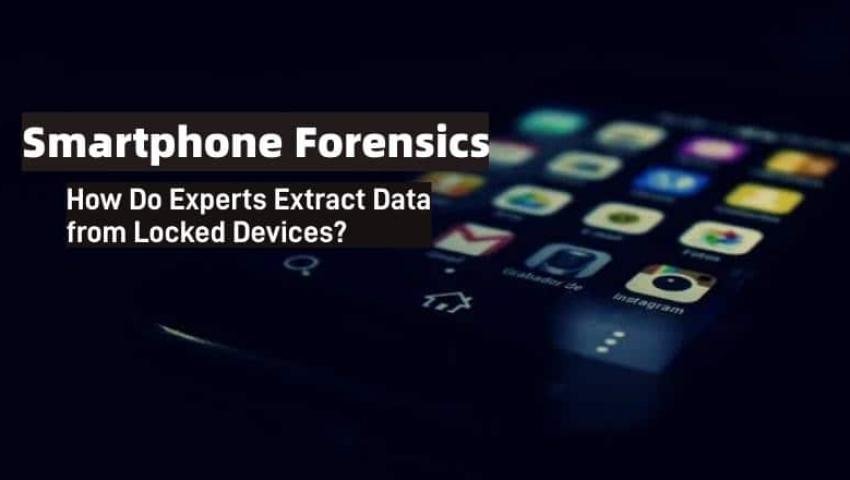
Bypassing Mobile Security: How Forensic Tools Recover Locked Phone Data
Facing a locked phone in an investigation? Discover the legitimate methods forensic experts use to bypass iOS and Android security to recover critical evidence.
The Foundation: Legal Authority
Before any technical process begins, the most crucial step is obtaining proper legal authority. Investigators must operate under a warrant, court order, or other legal instrument that grants them the right to attempt to access the device. Without this, any bypass is illegal.
The Three Layers of Mobile Security
To understand the bypass, you must understand the defense:
Lock Screen: The first gate (PIN, pattern, password, fingerprint, face ID).
File-Based Encryption (FBE): The primary encryption on modern devices. Each file is encrypted with a unique key, which is itself encrypted by a key tied to the user's passcode.
Hardware Security: A dedicated chip (like the Secure Enclave in iPhones or the Titan M chip in Pixels) that rate-limits passcode attempts and protects cryptographic keys. This is the biggest hurdle.
The Forensic Toolkit: Bypass Methods
Forensic tools don't have a universal "unlock" button. They use a portfolio of techniques, each applicable in specific scenarios. The following chart illustrates the decision-making flow an investigator might follow:
Here is a detailed breakdown of the methods illustrated above:
1. The Legal & Social Approach: The Consent Bypass
How it works: This is the simplest method. If the device owner, or someone with legal authority over the device (e.g., a company for a corporate phone), provides the passcode voluntarily, the problem is solved.
Tools Used: None, just documentation.
Limitations: Obviously, this is not an option in most criminal investigations.
2. The Cloud Bypass: The End-Run Around the Device
How it works: Instead of attacking the phone, investigators target the cloud backups. With a legal order, they can request data from Apple (iCloud) or Google. Alternatively, if they have the user's cloud credentials (found elsewhere or obtained through a subpoena), they can use forensic tools like Cellebrite Cloud Analyzer or Magnet AXIOM to directly extract the iCloud or Google Drive backup.
Tools Used: Cellebrite Cloud Analyzer, Magnet AXIOM, Oxygen Forensic Cloud Extractor.
Limitations: Requires backups to be enabled. iCloud Backups may be protected by Advanced Data Protection (ADP), which uses end-to-end encryption and prevents Apple from complying with data requests.
3. The Software Exploit: Leveraging Vulnerabilities
This is what most people think of as "bypassing." Forensic companies invest heavily in finding and weaponizing software vulnerabilities.
How it works: Experts discover a flaw in the device's bootloader or operating system. This flaw can be used to bypass the passcode retry limit or to dump the encrypted file system from the device for offline analysis.
Examples:
Checkm8: A "bootrom" exploit for iPhones from the iPhone 4S to the iPhone X. This is an "unpatchable" hardware-level exploit that allows experts to gain deep access to the device and install custom software to aid in extraction.
Tools like GrayKey and Cellebrite UFED Premium: These advanced (and expensive) tools often use a combination of undisclosed software exploits to perform file system or even full file system extractions on locked devices.
Limitations: Exploits are often device- and iOS-version specific. They are patched by Apple/Google in subsequent updates, so their lifespan is limited. They typically only work on devices below a certain security model (e.g., older iPhones).
4. The Brute Force Attack: Guessing the Passcode
This isn't a simple guessing game. It's a sophisticated process.
How it works: Using a software exploit (like Checkm8), the forensic tool can disable the security delay that locks the phone after failed attempts. It can then systematically try every possible passcode combination.
NAND Mirroring: An even more advanced technique where the device's memory chip (NAND) is physically read and cloned multiple times. Attacks are run on the clones, so the original data is never altered by failed attempts.
Tools Used: GrayKey, Cellebrite UFED Premium (with Advanced Unlock).
Limitations: Effectiveness decreases exponentially with passcode length. A 4-digit PIN (10,000 combinations) is vulnerable. A strong alphanumeric password (e.g., 12+ characters) is currently computationally infeasible to brute force due to the sheer number of combinations.
5. The Hardware Attack: The Last Resort
These are highly complex, expensive, and risky methods typically used only on the most critical cases.
Chip-Off: The memory chip is physically de-soldered from the device's logic board and read in a specialized chip programmer. However, with modern FBE and hardware security, the extracted data is still encrypted and often unusable without the key from the Secure Enclave/Titan M chip.
ISP (In-System Programming): A less destructive method where probes are attached to the memory chip while it's still on the board to read its contents.
The Reality Check: What's Possible in 2025?
Older Devices (iPhone 8-X): Still vulnerable to unpatchable hardware exploits like Checkm8. Brute force and software exploits are highly effective.
Newer Devices (iPhone 11 and later, modern Android with strong hardware): Extremely difficult. Success is not guaranteed and depends heavily on:
The specific model and iOS/Android version.
The strength of the passcode.
Whether cloud backups are available.
The forensic team's access to the latest, most advanced tools and exploits.
Mrityunjay Singh
Leave a comment
Your email address will not be published. Required fields are marked *

